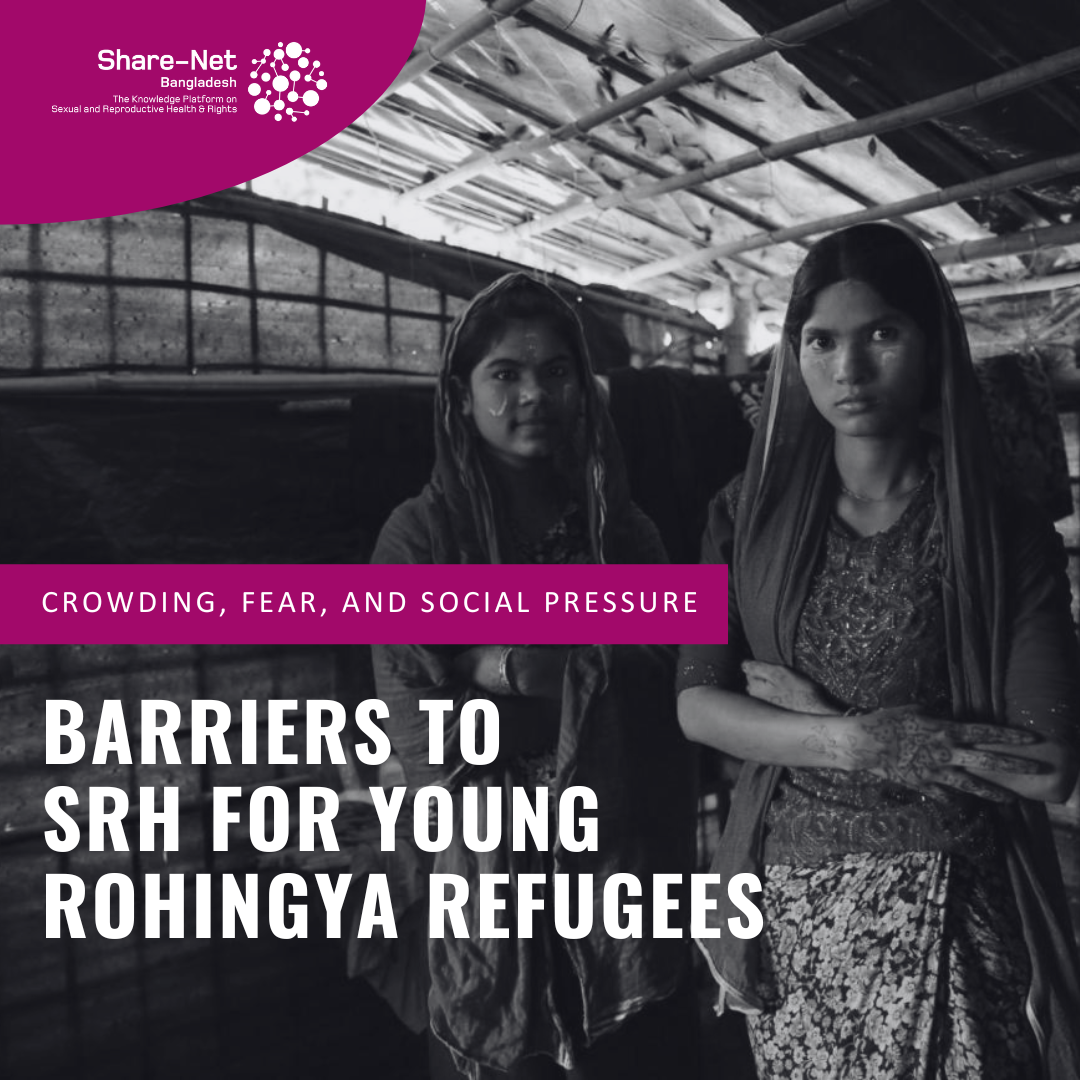Crowding, Fear, and Social Pressure: Barriers to SRH for Young Rohingya Refugees
The Rohingya refugee settlements are primarily spread across Ukhiya and Teknaf in Cox’s Bazar. These refugee settlements form the heart of a massive humanitarian crisis. One may question: what is the world’s largest and most densely populated settlement? The answer is these camps, and they shelter well over a million people who fled persecution in Myanmar. Thousands of tents, bamboo-thatch shelters, community centres, health facilities, and security posts define this challenging humanitarian environment.
Multiple layers of barriers hamper access to and utilisation of Sexual and Reproductive Health (SRH) services for young Rohingya refugees in these camps. Young people often hesitate to seek essential care due to three factors. Firstly, deeply ingrained social and cultural taboos, secondly, a pervasive sense of shame, and finally, intense scrutiny from their community.
Factors such as restricted mobility for young women, discomfort with male service providers, and personal safety concerns further complicate the uptake of services. A lack of privacy, misconceptions, and low awareness also limit young people’s ability to seek SRH information, fostering a fear of accessing services related to Sexually Transmitted Infections (STIs), family planning, or Gender-Based Violence (GBV).
Other factors include restricted mobility for young women, discomfort with the male providers of services, and personal safety concerns. Lack of privacy, misconceptions, and low awareness of reproductive health also create barriers to seeking information by young people and instil a fear of seeking services related to STIs, family planning, or GBV.
This intricate nature of the challenges was recently highlighted in a qualitative study titled ‘Barriers to access and utilisation of sexual and reproductive health services among young Rohingya refugees in Bangladesh’. The core finding of this research is quite interesting, which is that there is, indeed, the ‘availability’ of this service. However, a complicated mix of social norms, gender-based customs, and the complexities of personal identity (age, gender, marital status) makes service uptake difficult.
The research was done with in-depth interviews with 12 young refugees aged 18-24 and 7 service providers. The authors identified two primary categories of obstacles. Firstly, Negative Social and Cultural Attitudes pose a major challenge, as SRH information and services are complicated for unmarried young people to access. Deeply entrenched social customs, feelings of shame, and the pervasive perception that such services are ‘inappropriate’ significantly lower their acceptability among this group.
Secondly, the Health System Limitations: the general health infrastructure in the camp is extremely overcrowded; the operation hours are highly restricted; there is an urgent need for mechanisms to ensure confidentiality; and finally, a specific lack of youth-friendly services.
Taken together, this underlines the key point that availability does not mean utilisation where young refugees are concerned. Negative social norms, personal reluctance, and low service quality combine in a powerful way to act as a barrier to accessing key health benefits. Comprehensive SRH access for young Rohingya refugees requires intervention not only at the level of social values but also at the level of service quality.
The most important insight emerging from this study is through the application of the Intersectionality Framework. This method clearly shows how existing general healthcare programs do not take into consideration or make an appropriate attempt to address how a person’s diverse identities-an unmarried young woman or a married man, for instance-significantly affect their experience of accessing care.
The implications are therefore far-reaching and highly relevant to global SRHR and humanitarian relief programmes. These findings strongly indicate that the focus needs to shift: increasing the number of clinics or the supply of services is not adequate; service delivery processes need to be redesigned to be sensitive to an individual’s marital status, gender, age, and prevailing social customs.
Furthermore, if we are to make sure that unmarried young people seek care without the fear of facing social stigma, we have to guarantee complete confidentiality and dedicated access. We must move beyond the idea that the primary focus of SRH programmes are confined to clinical treatment alone. It must also shift to addressing and changing harmful social and gender-based norms within the community.
Researches like this have a unique way of reminding us that healthcare provision in refugee settings necessitates specialised and appropriate interventions, not merely based on age, but on understanding the complex interplay of intersecting identities.
Source: BioMed Central Ltd.

